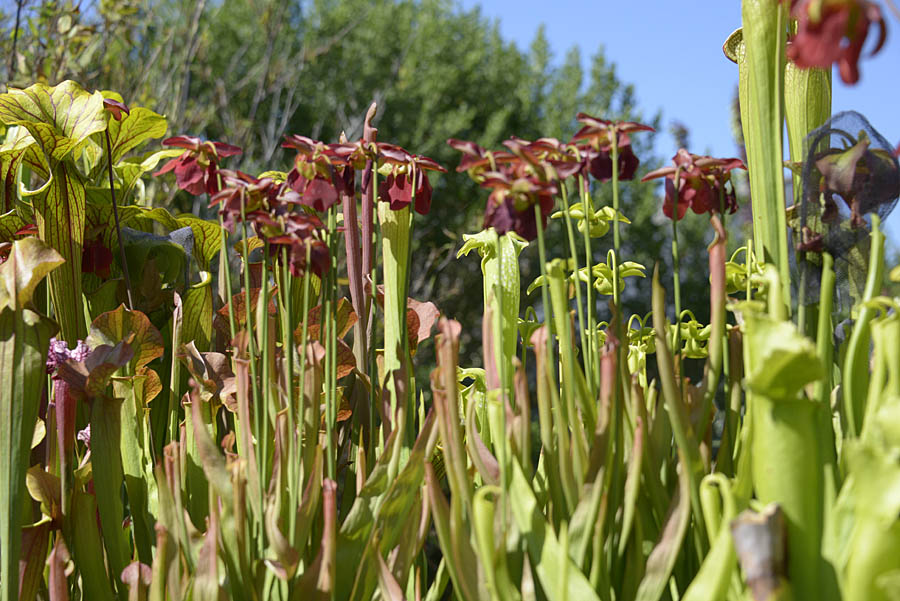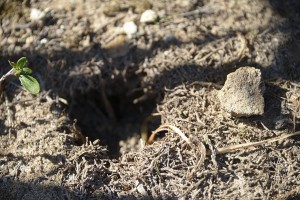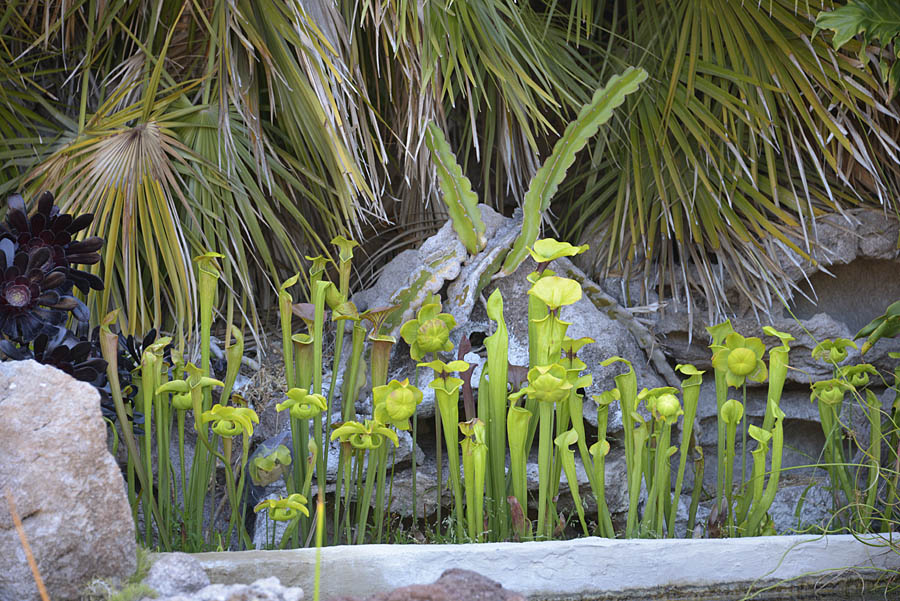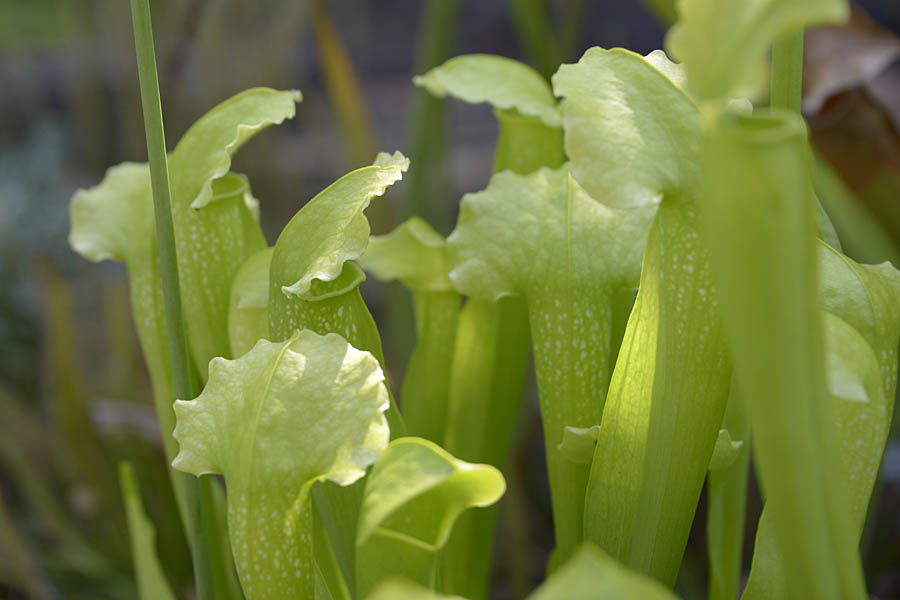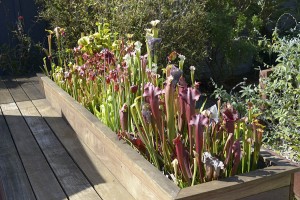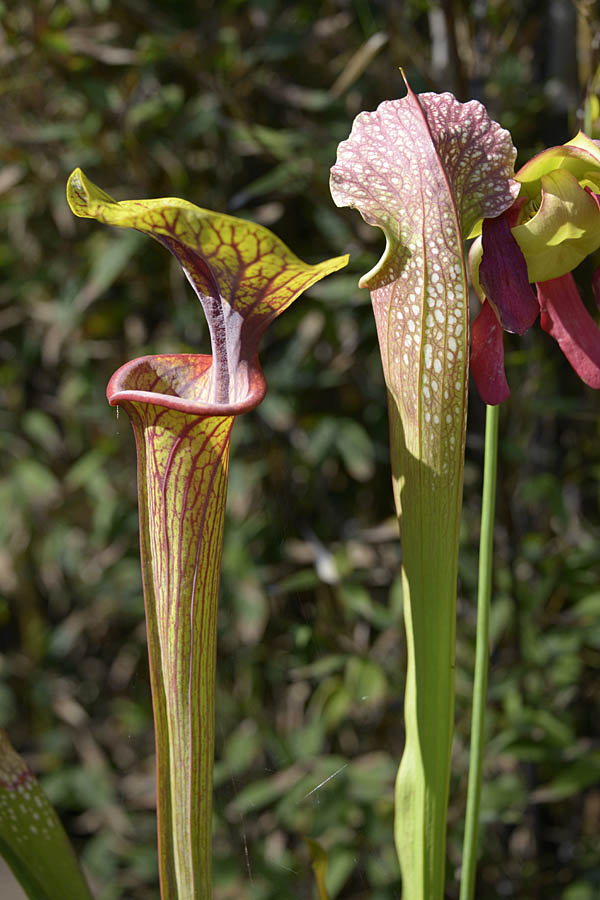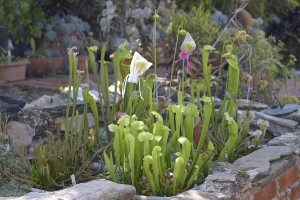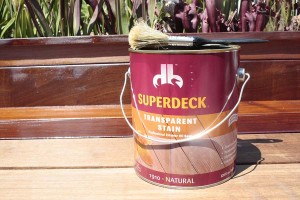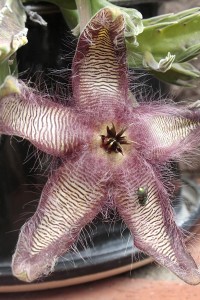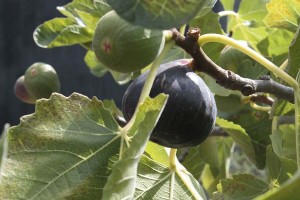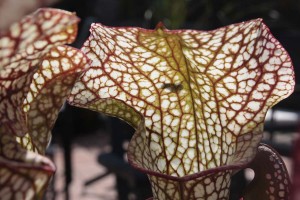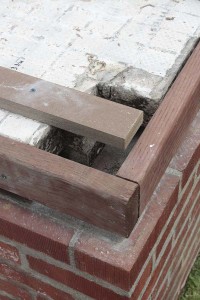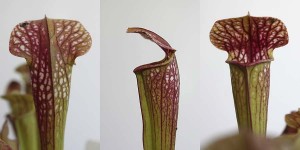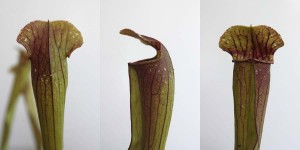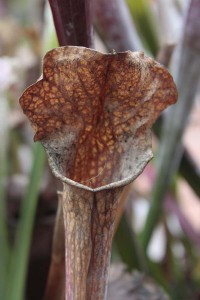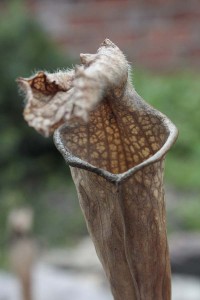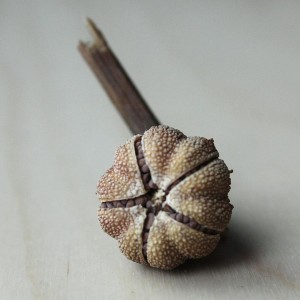Is a camera with more megapixels better? In our bigger is better culture your might be inclined to think so, but for everyday use more could be serious overkill. Here’s a quick look at some of what a super-high resolution camera can do with subject matter in the early autumn garden.
One of the main reasons for a pile of megapixels is for making large prints. My background in large-format film cameras got me used to being able to produce 20 x 24 inch prints that you could look at with a magnifying glass to see even more detail. That’s not a requirement for most photographers.

Here’s a shot of Corethrogyne (a.k.a. Lessingia) filaginifolia next to some stepping stones in the garden. Flowers this time of year are pretty thin, and this is one of the great plants that comes to the rescue by blooming in late summer and fall.
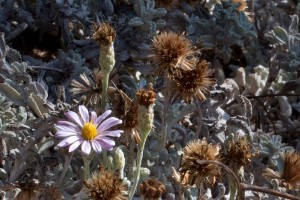
This is a full-pixel crop of the above. (Click to enlarge to 600 x 900 on your screen.) The dried flowers are pretty sharp, still. The open flower is a little blurry, but that’s more from being a little out of focus. It’s not great art, but if you were to print the first image full frame, the extra resolution would let you make prints with nice detail.
Related to the issue of making larger prints, images with higher megapixels allow you to make nicer looking cropped versions. You might want to crop an image for prints, or you might just want to be able to show closeups from a larger image for use on the web.
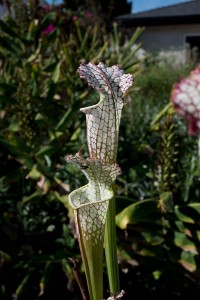
Sarracenia leucophylla “Super Swamp Ghost,” putting out some new pitchers for the fall. This is the original full-frame image. The picture has stuff on the margins that I thought was pretty distracting.
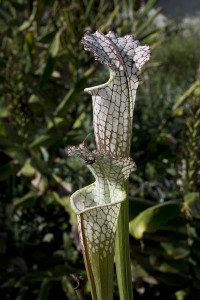
This is a slight crop of the previous, making a cleaner illustration with fewer distractions. You’d be able to do this with most images from most cameras.
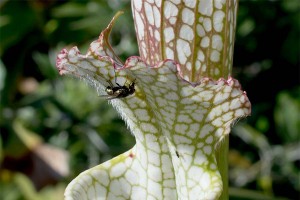
But what if you decided to crop to isolate just the mouth of one of the pitchers? I saw the one large fly when I took the photo, but I didn’t see the smaller one to the right until I looked closer.

Or how about getting really close, to take a really good look at the bigger fly? Or how about wanting to take a look at the hairs on the interior of the pitcher that direct insects downward, into the tube, into the digestive juices, never to escape. This is where the higher resolution original image gives you more options.
Why yes, you’d be able to accomplish some of this with a good zoom lens on your camera. But if you wanted to extend the reach of your zoom, it helps to have a photo with more information in it. Also zoom lenses don’t generally give you same image quality as lenses of fixed focal length, so that a $150 fixed lens can give results that would dust a premium zoom more than ten times the price.
The rest of these images are just quick looks at other things in the garden, not necessarily anything you’d want to print at a large size. I’ve down-sized the images from 7360 x 4912 pixels to 900 x 600, and this blog page further reduces them to 300 x 200. (Click to see the intermediate size.) If you only need photos this size, there’s probably no real need for a high megapixel camera.

Another of the pitcher plants, Sarracenia Sky Watcher.

Sarracenia leucophylla, “Hot Pink” clone from Botanique.

Sarracenia Green Monster x xcourtii, a cross by Rob Co of The Pitcher Plant Project.

Sarracenia alata x minor with a garden frog, contemplating the universe, deciding if it needs a high megapixel camera.

Dried flower heads, late season, on black sage. Salvia mellifera.

A sure sign that autumn is here, the dried flower heads and supporting stems from San Miguel Island buckwheat, Eriogonum grande var. rubescens. If you water the plant more than I do it’d stay a little greener. This plant is anything but dead, with there still being lots of green closer to the crown of the plant. Some people would cut all this back, but I really like how it looks draped over this patinated wall.
Cropped and focused a little differently and photographed with a little more care than my quick snapshot this might make a nice wall print.
FYI, the camera used here was the Nikon D800E, which is categorized at 36.3 megapixels. That’s pretty extreme for a small DSLR. But if you want to talk about extremem miniaturization, there’s even a 41 megapixel cellphone camera, the Nokia PureView 808. Word on the street is that it’s not a particularly great picture-take much higher than when you set it at at 5 megapixels, within the range many cellphone cameras operate in. Making a 41 megapixel cellphone camera seems to be a mostly a stunt, technically an extremely high-res camera, but almsot useless when operated that way. The Nikon by contrast is actually a good camera.
